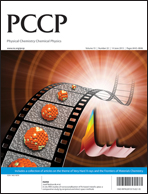Self-discharge of electrochemical double layer capacitors
Abstract
Spontaneous voltage drop between EDLC electrodes, when it is kept under the open-circuit condition, is commonly called ‘self-discharge’ and is interpreted as a result of energy loss by the device. Three mechanisms of self-discharge were proposed: due to a leakage-current, faradaic reactions and charge redistribution. According to the law of energy preservation, if the voltage drop is associated with the energy loss, the energy would more likely be exchanged with the environment. While heat generation was measured during EDLC charging and discharging, the corresponding effect during storage under open-circuit conditions has not been reported. This may support the conclusion that voltage changes during ‘self-discharge’ are not related to a considerable energy loss. Moreover, it has been shown that a two-stage charging process, i.e. first galvanostatic charging followed by a potentiostatic charge redistribution, resulted in considerably slower potential changes when the device was switched to the open circuit. All discussed models were based on the assumption that the energy accumulated by EDLCs is proportional to the voltage in the second power, with capacitance (C/2) as the proportionality constant. However, it has been shown that during EDLC charging or discharging through a resistance R, equations valid for ‘dielectric’ and electrolytic capacitors, do not hold in the case of EDLCs. Consequently, the assumption that the energetic state of the EDLC is proportional at any time to the voltage in the second power may not be valid due to considerable variability of the ‘constant’ C. Therefore, voltage changes may not reflect the energetic state of the device.


 Please wait while we load your content...
Please wait while we load your content...